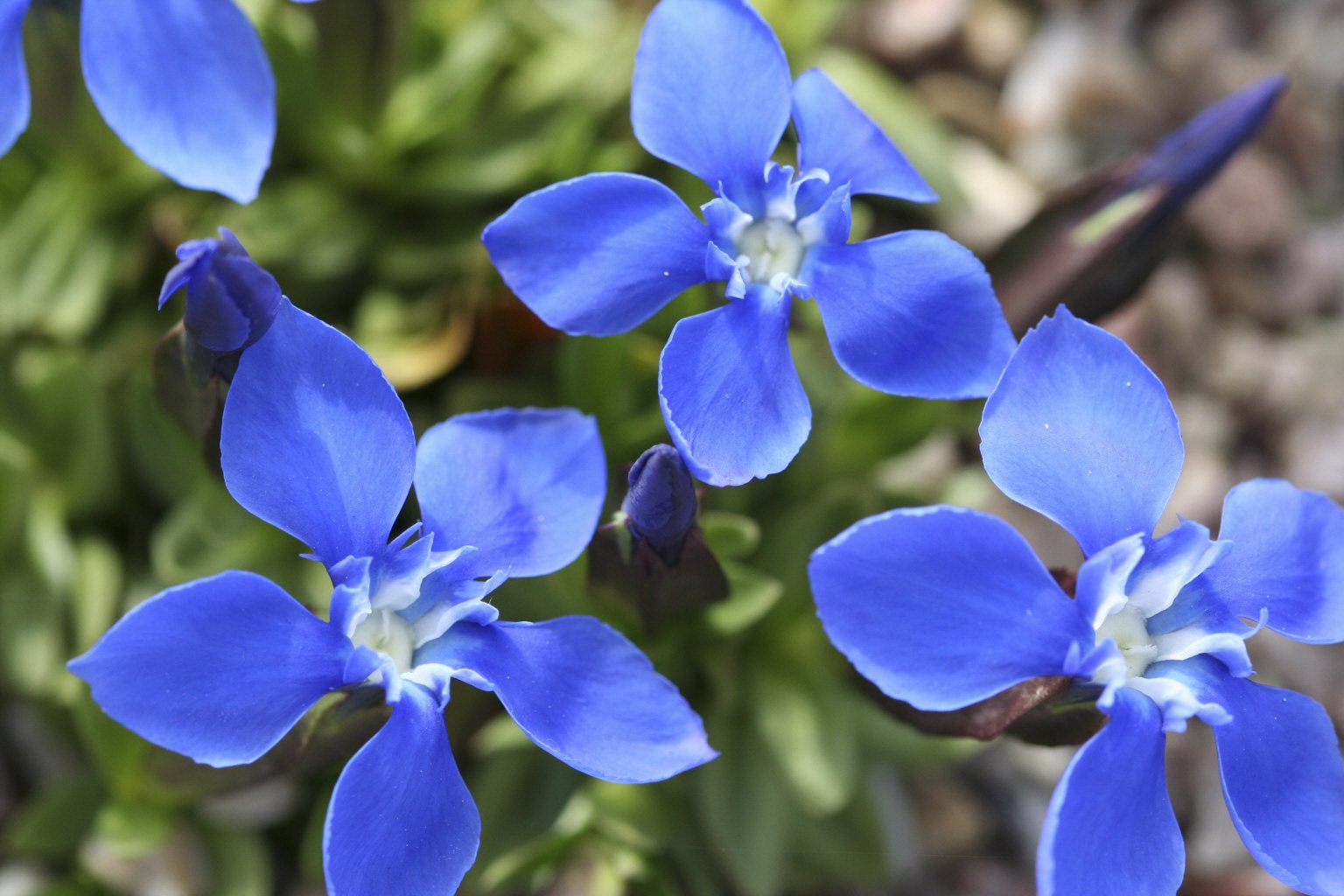Gentiana verna
spring gentian
A diminutive evergreen perennial slowly forming a mat of narrowly ovate leaves, with solitary, erect, deep sky-blue flowers with white throats, opening in late spring and early summer
Size
Ultimate height
Up to 10cmTime to ultimate height
2–5 yearsUltimate spread
0–0.1 metreGrowing conditions
Moisture
Moist but well–drainedpH
Alkaline, NeutralColour & scent
| Stem | Flower | Foliage | Fruit | |
| Spring | Blue | Green | ||
|---|---|---|---|---|
| Summer | Blue | Green | ||
| Autumn | Green | |||
| Winter | Green |
Position
- Full sun
Aspect
South–facing or West–facing
Exposure
Exposed or Sheltered Hardiness
H5Botanical details
- Family
- Gentianaceae
- Native to GB / Ireland
- Yes
- Foliage
- Evergreen
- Habit
- Matforming
- Genus
Gentiana can be annuals, biennials, herbaceous or evergreen perennials, mostly with showy, trumpet or salver-shaped flowers
- Name status
Correct
- Plant range
- Europe
How to grow
Cultivation
Grow in light, humus-rich, moist but well-drained soil in plenty of sun
Propagation
Propagate by seed in containers in an open frame as soon as seed is ripe. Propagate by division or root offsets in spring
Suggested planting locations and garden types
- Patio and container plants
- Rock garden
- Gravel garden
- Garden edging
Pruning
No pruning required
Pests
Slugs and snails may be a problem outdoors. Under glass, watch out for aphids and glasshouse red spider mite
Diseases
Gentian rust may be a problem and various soil fungi may cause stem rots
Get involved
The Royal Horticultural Society is the UK’s leading gardening charity. We aim to enrich everyone’s life through plants, and make the UK a greener and more beautiful place.
